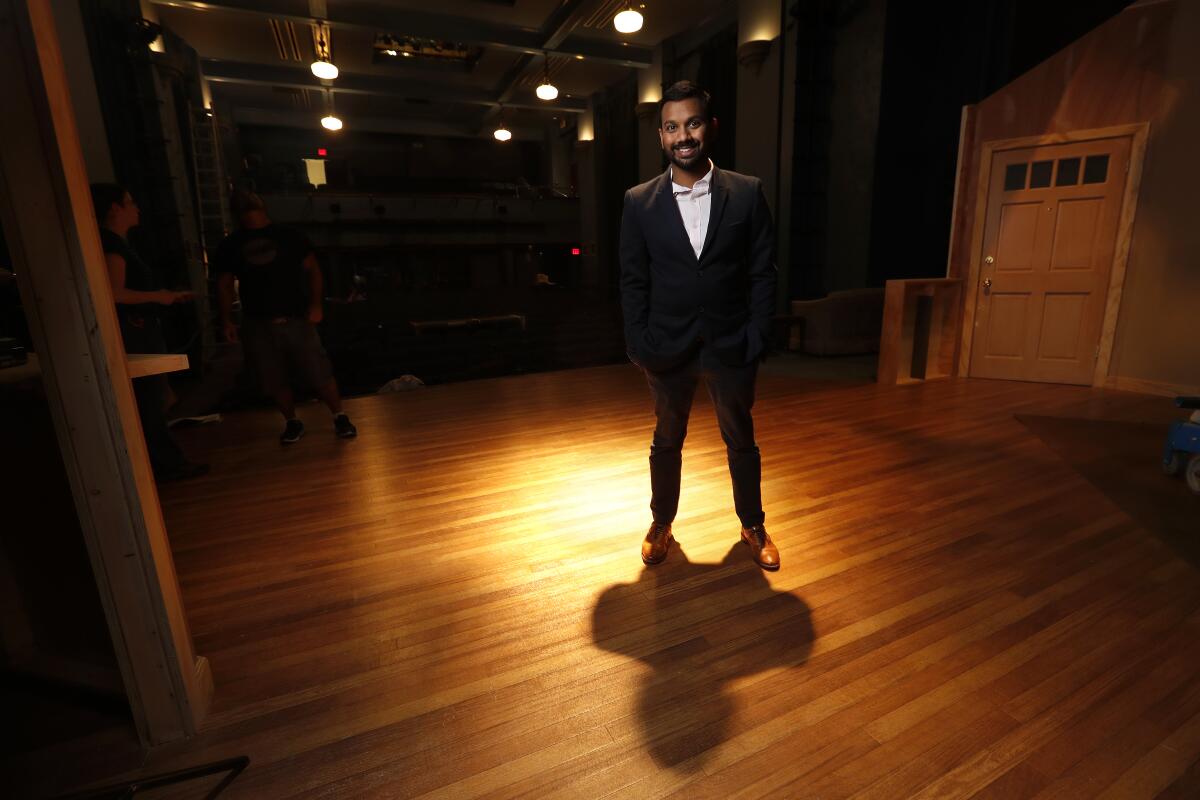Feedback: Readers weigh in on ‘The Ultimate L.A. Bookshelf’

More list-worthy books
Regarding “The Ultimate L.A. Bookshelf” [April 16]: List-making relies on the impossible premise that — like the L.A. River flood channel — a list can contain the uncontainable. I suspect that every L.A. reader has built a book collection that defines and illuminates fact and dream, and the textures of death and life in the City of Angels.
An L.A. lifer, my essentials include Patt Morrison’s and Mark Lamonica’s “Río L.A.: Tales from the Los Angeles River”; “Hitler in Los Angeles” by Steven J. Ross; the L.A. Times’ “California Cookbook”; Joseph Wambaugh’s “The Black Marble”; “And Still We Rise” by Miles Corwin; Steve Hodel’s “Black Dahlia Avenger”; and Thomas Perry’s (yes, we’re related) “Metzger’s Dog.”
I’d love to see other readers’ lists.
Jo Perry
Studio City
::
I was delighted to see “Ramona” by Helen Hunt Jackson prominently featured.
“Ramona” is performed every year between April and May at the Ramona Bowl Amphitheatre in Hemet. This year is the 100th anniversary.
Kathryn Leibovich
Hemet
::
I greatly enjoyed your special section on 110 essential books about L.A. and Southern California. As a resident of this special place for almost 50 years, I’ve read a number of them myself.
I was surprised that you didn’t include the L.A. Times’ own longtime columnist, the great Jack Smith, whose numerous essays taught his readers about this region in humorous and poignant ways. His collection of essays called “The Big Orange” is especially wonderful. Who can forget his ongoing debate with himself and others about whether they’re called blue jays or scrub jays?
Steve Tarzynski
Santa Monica
::
I read through the “Ultimate Bookshelf” articles, plus the 26 best books about L.A., and — outside of a mention in one of the introductory paragraphs — no mention of Michael Connelly’s “Bosch” series or “Lincoln Lawyer” series. Has he sold too many books? Does turning them into TV series mean they don’t make the list?
William Charlton
Los Angeles
::
If you would entertain an addition to your “110 essential books” on “The Ultimate L.A. Bookshelf” (April 16), I would nominate “Writing Los Angeles: A Literary Anthology,” edited by David L. Ulin — 800 pages of essays, stories, etc. from more than 70 writers, including Tom Wolfe’s classic essay, “The Kandy-Kolored Tangerine-Flake Streamline Baby,” with its report on L.A.’s cars that meant more “than architecture did in Europe’s great formal century, say, 1750 to 1850. They are freedom, style, sex, power, motion, color.”
Also, Lynell George’s “City of Specters,” which began with Truman Capote’s report that most L.A. students, asked to specify the antonym of “youth,” answered “death.”
Rick Richman
Los Angeles
CTG’s past, present and future
My partner and I have been longtime subscribers to the Center Theatre Group, and as such, we are glad to add our voices of welcome to Snehal Desai, its new artistic director [“He’s aiming to ‘turn the ship,’” April 17].
The fact that he has done a stellar job at East West Players, that he is an L.A.-based person of color himself, and that he espouses an artistic commitment to diversity and inclusion in theatrical productions are all welcome news.
Bring on all those wonderful new plays that are written, directed and acted by women, and by men and women of color, and LGBTQ+ artists. Plays that will challenge us in ways that are surprising, moving and — lest we forget — entertaining.
As non-persons of color (a.k.a. white males), we are eager to experience and to learn from multiple other cultural points of view. But while doing all of the above, let us occasionally get to see wonderful productions of O’Neill, Miller, Williams, Wilson, Hansberry and Kushner, to name just a few. The past still has something to teach us.
We wish Desai all the best, as he takes on what everyone agrees to be an impossible job. But if theater doesn’t engage with what is beyond the ordinary scope of how humans understand and grapple with the world, then why bother? We’re eager and willing to give him all the time he needs. Just don’t forget our theatrical past in the process. It too has its own legitimate part to play in our ongoing quest for excellent, relevant and absorbing theatrical experiences.
Paul Lewis
Long Beach
Not this movie, not this time
Justin Chang’s review of “Beau Is Afraid” [“Afraid not, ‘Beau’,” April 14] should keep moviegoers away in droves. “Three frenzied but unhurried hours” of “emotional annihilation” of a “battered, petrified soul” on “the bleakest of picaresque journeys.”
Yikes! Sounds like a great choice for a first (and last) date.
Noel Johnson
Glendale
Maxed-out TV
While reading Mary McNamara’s column on HBO Max [“It’s not TV. It’s not HBO. What is Max?” April 14], the following came to mind, “You can please all of the people some of the time and some of the people all of the time, but you can’t please all of the people all of the time.”
I think McNamara’s analogy to PBS was the best example of how a TV network is supposed to and has continued to work. It would certainly explain why PBS is the most-watched and Fox News the least-watched in our household.
John Snyder
Newbury Park
Jazz notes in video game
Regarding “His ‘Mario’ score is a personal record” [April 11]: As someone who played “Super Mario Brothers” and as a Miles Davis fan, I was surprised back in the 1990s when I listened to Miles Davis’ “Get Up With It” and heard several themes from “Mario Brothers.”
“Calypso Frelimo” has a very distinctive bass line that is used when Mario is underground. The music was released in 1974 and I missed it then but not the composer, Koji Kondo.
Apparently Kondo (who is credited with the composition) downplays his license when he admits he was “at that time listening to jazz and Latin style music, so I do believe the songs contain some of the essence of those styles.”
The resemblance is more than essence and includes melody and instrumentation.
Stephen Siemens
Monterey Park
The happiest place in Florida
Regarding “DeSantis hits back at Disney” [April 18]: After shipping off unsuspecting immigrants to blue states, DeSantis is demonizing Mickey and Minnie and threatening to make their neighbors convicts.
It’s time for Florida Democrats to counterpunch with plans for homeless shelters next door to the governor’s mansion.
Alan Segal
San Diego
More to Read
The biggest entertainment stories
Get our big stories about Hollywood, film, television, music, arts, culture and more right in your inbox as soon as they publish.
You may occasionally receive promotional content from the Los Angeles Times.











